Bering Straits – On the edge of tomorrow
At crossroads of human expansion for millennia; Bering Straits Native Corporation casts its vison to the future – the Arctic North of 60 Mining News – October 1, 2019
Last updated 9/26/2020 at 5:45am
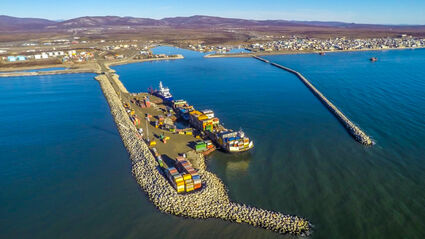
U.S. Army Corps of Engineers
U.S. Army Corps of Engineers identified the Port of Nome (pictured above) and Port Clarence, a natural deep-water port of refuge just south of Bering Strait, as the two best locations for a deep-sea port to serve development of the Arctic.
Home of the famed golden beaches of Nome that have captured the imagination of millions over the past 120 years, the Bering Straits Native Corporation (BSNC) region covers the Seward Peninsula and coastal lands arcing around the eastern and southern coast of the Norton Sound in the far western reaches of Alaska.
While this region may be 300 miles beyond North America's highway system, it has served as a crossroads for human activity for at least 15 millennia and will continue to do so well into the future. This is because the home of BSNC lies at the eastern extent of the Beringian land bridge that provided passage for human migration east into the Americas and the Pacific gateway to the Arctic.
This epicenter of human activity gained world renown when word got out that gold was discovered on the shores of the Seward Peninsula in 1898, sparking the Nome Gold Rush. Today, miners still recover marine placer gold just off Nome's beaches.
The hardrock source for most of the more than 7 million ounces of the placer gold recovered from the beaches and streams in the Bering Straits region, however, has yet to be mined. In addition, this stretch of far western Alaska is rich in a wide variety of minerals that are becoming increasingly critical to modern life in the United States.
As such, much of the roughly 2.2 million acres of land conveyed to BSNC under the Alaska Native Claims Settlement Act (ANCSA) was selected for its gold, tin and other mineral potential.
BSNC sees the responsible exploration and mining of the rich mineral wealth in its region as an opportunity to strengthen the economy and help advance other opportunities in the region, including development at Point Spencer, a natural deep-water port of refuge lying just south of Bering Strait.
Critical juncture
More than 15,000 years before gold, tin and other minerals drew fortune seekers to Nome, some of the first people to step foot on the North American continent migrated east across a land bridge between Eastern Eurasia and Northwest North America exposed by lower oceans during the Ice Age.
While the ancestors of many of North America's First Nation people are believed to have trekked across this bridge as they ventured east and then south, the forebearers of the nearly 8,000 Inupiat and Yup'ik shareholders of BSNC arrived later and remained in this important crossroads area.
"We have thrived and survived in the Arctic for thousands of years," Bering Straits President and CEO Gail Schubert said during an April presentation at the Arctic Encounters Symposium.
Today, Bering Straits, a narrow ocean passage that serves as marine gateway to the Arctic, lies between the BSNC region and Eurasia.
"It's a mere 55 miles across from the U.S. side to Russia in what is commonly referenced as 'the choke point,'" Schubert explained. "We are located at a critical juncture in the Bering Straits.
This "choke point" provides Pacific Ocean access to two major Arctic shipping lanes that are becoming increasingly important as Earth warms – the Northern Sea Route, which skirts the north shores of Russian en route to Europe, and the Northwest Passage, which heads east around Alaska and Canada before reaching the Atlantic Ocean near Greenland.
BSNC is critically aware that ships taking either route must cruise past its shores – raising both security concerns and potential economic opportunities for this region.
The ANCSA corporation and the city of Nome are advocating for dual port approach to infrastructure in the Bering Strait region, a port at the city of Nome and a second on BSNC and state lands at Port Clarence.
After studying more than a dozen locations, the U.S. Army Corps of Engineers and Alaska Department of Transportation identified these as the two best places to develop a deep-sea port to serve as a base to protect national interests, support ship traffic and serve economic development in the Arctic. Considering the expected increase in Bering Straits traffic, BSNC and Nome see the need for modern port facilities at both locations.
BSNC says private companies have expressed interest in partnering on the development of infrastructure on its lands at Point Spencer. Port Clarence, a 13-mile-wide basin with waters in excess of 35 feet deep, is formed by the south to north trending Point Spencer. A commercial port here could provide safe anchorage for the expected increase in ships passing through the Bering Strait, as well as base of operations associated with national security interests.
"I believe that Port Clarence is going to positively contribute to sustainable economic growth in the BSNC region," said Schubert.
This economic growth might not only come from ships seeking safe harbor at either end of long Arctic treks, but from mining a world-class graphite deposit only about 25 miles inland. While this project, Graphite Creek, is located on state lands, it could provide an anchor customer for a port on BSNC land at Spenser Point.
Graphite Creek hosts 10.95 million metric tons of measured and indicated resources averaging 7.8 percent (850,534 metric tons) graphite; plus 91.89 million metric tons of inferred resource averaging 8 percent (7.34 million metric tons) graphite. While a globally significant supply of this battery material, this deposit only considers a small fraction of the thick lenses of graphite surfacing along an 11-mile-long stretch of the Kigluaik Mountains on the Seward Peninsula.
Graphite One Inc. is currently working on environmental, engineering and other work needed for a pre-feasibility study that will provide details of a potential mine at Graphite Creek. If the economics and other parameters are positive, the company hopes to advance the project to a final feasibility study, permitting and development.
If a mine is developed at Graphite Creek, then Spencer Point would make an ideal port for delivering supplies to the project and shipping graphite concentrates from the operation.
Edge of tomorrow
Not only is the BSNC region America's Pacific Ocean gateway to the Arctic, it is as far west as you can travel before crossing the International Date Line.
This strategic geographic position shapes the corporate vision of BSNC – "On the edge of tomorrow, we cast our vision to the future. We strive to empower our people as leaders in the development and protection of the Arctic region."
With its vision cast forward and north, the Bering Straits regional corporation's mission is focused on improving the lives of its people through economic development in a way that protects its lands and preserves the diverse heritage and lifestyle of its Inupiaq, Siberian Yupik and Central Yup'ik shareholders.
While the discovery of gold on the beaches of Nome and the cash economy that followed has brought significant changes to the Seward Peninsula over the past 120 years, living off the land remains important to the livelihood and identity of the First People of the BSNC region.
Finding a balance between providing its shareholders the benefits of a modern cash economy and ensuring their ability to maintain the traditional subsistence way of life plays a central role in BSNC's business and land use decisions.
"Bering Straits is ... supporting the subsistence lifestyle by being very diligent and careful with the lands that have been conveyed to us through the Alaska Native Claims Settlement Act," said BSNC Vice President of Nome Operations Larry Pederson.
These BSNC lands include roughly 2.1 million acres of subsurface estate underlying the surface estate selected by the 17 ANCSA Village corporations in the Bering Straits region. These village selected surface estates were selected to protect subsistence and traditional use areas; coastal access and sealing areas; and potential future uses.
In addition to the subsurface rights under village lands, BSNC also owns approximately 145,000 acres of surface and subsurface lands selected for their mineral or other natural resource potential.
"While other regions in the state have timber or oil reserves, the Bering Strait region has minerals," BSNC explains on its website.
Golden Seward Peninsula
While Seward Peninsula's placer gold has captured the imaginations of millions over the past 120 years, the hardrock source of most of this alluvial aurum has yet to be mined – much of which will likely be found on BSNC lands.
Roughly 500,000 oz of hardrock gold has been outlined at Rock Creek, a property only about five miles outside of Nome that is owned by BSNC and Sitnasuak, the village corporation that owns the surface rights.
Novagold Resources Inc. finished developing a mine at Rock Creek in 2008 but never achieved commercial production.
Bering Straits acquired Rock Creek in 2012 and evaluated the potential of advancing the mine to commercial production. After two years of evaluation, however, BSNC determined Rock Creek would not be economically viable and used the roughly $13.5 million of bond money that came with the project to reclaim the mine.
While the gold mine never came to fruition, the successful reclamation made use of local labor and businesses, providing economic benefit to the region and BSNC's shareholders.
"The reclamation of the Rock Creek Mine brings closure to a project that began in 2006 with the construction of the mill, gold circuit, and tailing storage facility by Novagold," Schubert said in 2015.
Rock Creek, however, is not the only or most prospective gold property on BSNC lands in the Nome and Council mining districts, where roughly 7 million oz of placer gold has been recovered so far.
One of these gold areas covered by BSNC land is Big Hurrah, a deposit about 35 miles northeast of Nome that produced around 27,000 oz of hardrock gold early in the 20th century.
Novagold, which considered trucking ore from Big Hurrah to the mill at Rock Creek, outlined 1.8 million metric tons of resource averaging 4.61 g/t (roughly 267,000 oz) gold.
Bluff, located on the southern shores of the Seward Peninsula about 50 miles east of Nome, is another gold deposit that has been discovered on BSNC ground.
Drilling carried out by BHP Billiton during the 1980s encountered gold in three zones at Bluff – Daniels Creek, Saddle and Koyana Creek. Based on its work, BHP estimated that Daniels Creek hosts 3 million metric tons averaging 3.43 g/t (300,000 oz) gold; Saddle contained 1.5 million metric tons averaging 3.77 t/t (165,000 oz) gold; and Koyana Creek hosts 2 million metric tons averaging 0.69 g/t (40,000 oz) gold.
These are two of the most advanced of the dozens of hardrock gold occurrences in the Bering Straits region. "Since these deposits do not adhere to man-made boundaries, many of them lie within a combination of BSNC, state, and federal land," the ANCSA regional corporation explains.
BSNC critical minerals
While lore and popular culture has shined a light on the vast gold found in the Bering Straits region, the Seward Peninsula is also rich in tin and several related critical minerals.
Much like the BSNC region, at first glance tin does not seem critical but has played a vital role in human history for eons.
Today, tin is on the U.S. Geological Survey's list of 35 minerals and metals deemed critical to the United States.
And, the Bering Straits region is one of the best places in the U.S. to find this critical metal.
In fact, the western tip of the Seward Peninsula has alluvial deposits so rich in the tin mineral cassiterite that early prospectors who flocked to the area during the gold rush days established Tin City, a small mining town near Cape Mountain and about 90 miles northwest of Nome, in 1904.
Placer mining of Cape Creek, which drains the mountain rising to the northwest of Tin City, produced an estimated 3.3 million pounds of placer tin, according to the USGS. The largest known chunk of cassiterite recovered during placer mining of Cape Creek weighed 142 lbs.
While Tin City and the mines it hoped to support were short-lived, this minerals-rich area of western Alaska still hosts rich placer and lode tin deposits.
Other tin prospects found near Cape Mountain include Lost River and Potato Mountain.
Kougarok, located about 90 miles east of Tin City, is another promising lode tin deposit on the Seward Peninsula.
Work in the 1980s estimated a portion of the tin-bearing granites there hosts some 6 million lb of tin in 240,000 tons of historical resource averaging 1.3 percent tin. Some of the tin deposits at Kougarok have an appreciable amount of beryllium, tungsten, fluorspar, niobium and tantalum, all on the USGS list of critical minerals.
BSNC-owned lands cover tin-rich occurrences near Tin City and Kougarok. The ANCSA corporation also owns lands that cover uranium and rare earth occurrences at Mount Arathlatulik on the Seward Peninsula.
Excellence in business
In recent years, BSNC has built an impressive group of more than 20 subsidiary businesses that provide everything from the finest hotel accommodations in Nome to aerospace engineering.
In between these extremes lies numerous BSNC-owned companies that can supply services and supplies to Alaska's mining and mineral exploration sector.
• Alaska Industrial Hardware – More widely known as AIH, this high-quality equipment, tools, industrial materials, maintenance supplies and safety products supplier was acquired by BSNC in 2015.
• Arcticom – An Anchorage-based telecom company that offers a broad range of information technology solutions that is recognized with exceptional ratings and commendations tied to installation successes.
• Bering Straits Development Company – A full-service general contractor with experience in commercial buildings and industrial construction; and in-house expertise in electrical, plumbing and heating systems.
• Bering Straits Information Technology – Provides IT support services related to software development, hardware development, project and inventory management and information assurance and security.
• Bering Straits Logistics Services – Provides logistics support services, including supply-chain management, warehousing and storage; specialized freight handling and related facilities support.
• Bering Straits Technical Services – Provides short- and long-term solutions related to administrative management; financial planning; records management; and office and organizational planning.
• Eagle Eye Electric – A full-service general contractor and construction manager that provides construction, renovation, electrical and environmental solutions to meet customer needs.
• Iyabak Construction – A licensed engineering and general construction firm providing design-build and construction management services in Alaska and the Pacific Northwest.
• Sound Quarry Inc. – Independent operator of Cape Nome Quarry about 12 miles east of Nome, a source of industrial grade armor stone and riprap used on seawalls, causeways and breakwaters.
Much like the Beringia Land Bridge that linked continents or the Bering Strait that serves as a gateway to the Arctic, Bering Straits Native Corp. hopes to serve as a connection to the past, present and future.
This bridge is built on a foundation of reaching for excellence in all its ventures, from mineral exploration on BSNC lands to the wide variety of services provided by its subsidiaries. Most importantly, being good stewards of the lands that many of its people depend for their subsistence and spiritual well-being.
"I really want our customers and others that look at Bering Straits ... to recognize us as a leader, not only in the kinds of services that we provide but also to understand and see the strong business ethics that we operate under," said Schubert.
EDITOR'S NOTE: "Bering Straits – On the edge of tomorrow" is the ninth article in a 13-part series that investigates what the Alaska Native Claims Settlement Act means for Alaska's mining sector and its future. The remaining articles will continue to dig deeper into each of the land-holding Regional corporations; the mining lands that they own; and the services they offer to the mining sector. As a life-long Alaskan that has written about mining here for more than a decade, it is my hope that this series will provide a better understanding of ANCSA and serve as a guide to mining companies seeking to do business in The Last Frontier. For further information on ANCSA see An Alaska Native claims primer for miners published in the February edition of North of 60 Mining News.










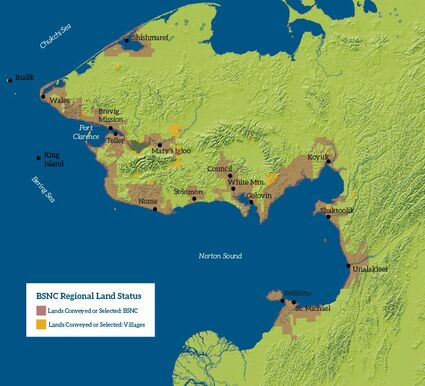

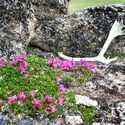

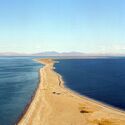

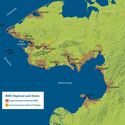
Reader Comments(0)